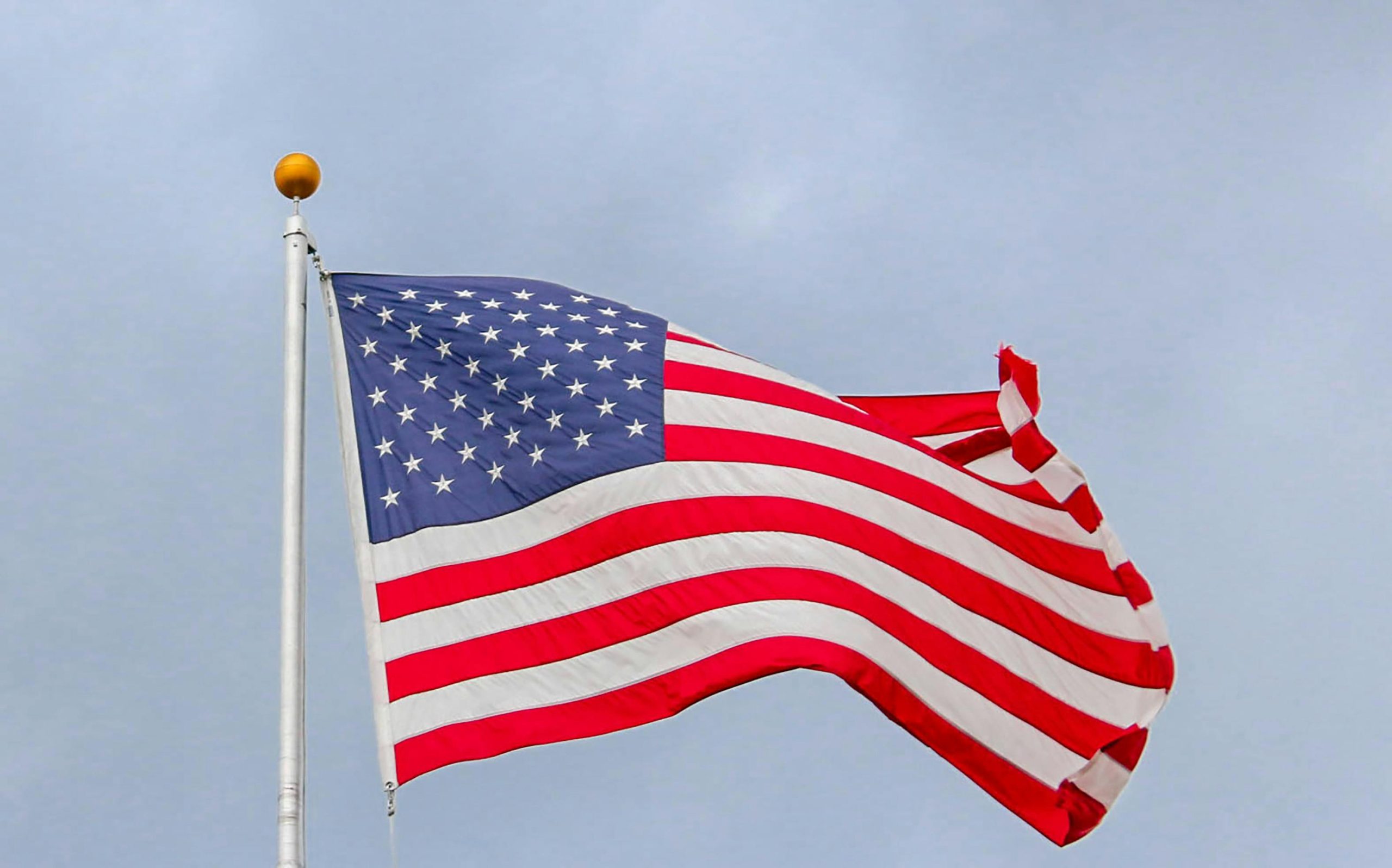
Learn about Independence Day in the USA
The Fourth of July is important because it marks the day when the Declaration of Independence was adopted by the Continental Congress in 1776. This document declared that the thirteen American colonies were no longer under British rule and were now independent states. It signified the birth of the United States of America and the beginning of the country’s journey towards freedom and self-governance. The Fourth of July is a symbol of American independence and serves as a reminder of the values and principles on which the nation was founded.
People celebrate the Fourth of July in various ways, including:
- Watching Fireworks Displays: Fireworks light up the night sky and are a traditional way to celebrate Independence Day. Many cities and towns host fireworks shows that are enjoyed by people of all ages.
- Attending Parades: Parades featuring marching bands, floats, and patriotic displays are a common sight on the Fourth of July. These parades celebrate American history and pride.
- Having Barbecues and Picnics: Many families and friends gather for barbecues and picnics on the Fourth of July. They enjoy classic American dishes like hot dogs, hamburgers, and apple pie while spending time together.
- Participating in Patriotic Activities: Some people participate in patriotic activities such as flag-raising ceremonies, singing the national anthem, or attending patriotic concerts.
- Spending Time with Family and Friends: The Fourth of July is a time for people to come together with their loved ones and celebrate their shared history and values.
Why Do Americans Celebrate July 4th?
The Declaration of Independence
On July 4th, Americans celebrate Independence Day, also known as the Fourth of July. But why is this day so important? It all dates back to July 4, 1776, when the Declaration of Independence was adopted by the Continental Congress. This document declared that the thirteen American colonies were no longer under British rule and were now independent states. This historic moment marked the birth of the United States of America.
Symbolism of the Fourth of July
The Fourth of July is more than just a day off from school or work. It is a day filled with symbolism and pride for Americans. The fireworks that light up the night sky represent the rockets and bombs used during the American Revolutionary War. The colors of the American flag—red, white, and blue—symbolize bravery, purity, and justice. Many people also celebrate with parades, barbecues, and gatherings with family and friends.
Historical Significance
The Fourth of July is a time to reflect on the sacrifices made by the founding fathers and early patriots who fought for freedom and independence. It is a day to honor their courage and determination in the face of adversity. The celebrations on this day serve as a reminder of the values and principles that the United States was founded upon, such as liberty, equality, and democracy.
Traditions and Customs
Throughout the country, Americans have developed various traditions and customs to commemorate Independence Day. From watching fireworks displays to attending patriotic concerts, there are countless ways to celebrate. Many communities hold parades featuring marching bands, floats, and veterans. Families often gather for picnics and cookouts, enjoying classic American dishes like hot dogs, hamburgers, and apple pie.
Modern-Day Celebrations
Today, the Fourth of July remains a significant holiday in the United States. It is a time for Americans to come together and celebrate their shared history and values. In addition to traditional festivities, many people also take the opportunity to reflect on the progress made as a nation and the challenges that lie ahead. So, as you enjoy the fireworks and festivities on the Fourth of July, remember the importance of this day in American history.
In the annals of American history, a pivotal moment reverberates across time—Independence Day, a commemoration eternally tied to July 4th, 1776. This date marks the auspicious adoption of the Declaration of Independence, heralding the genesis of a nascent nation founded on bedrock principles of autonomy and self-rule. An indelible ink upon the narrative fabric of America’s past, Independence Day transcends mere observance—it epitomizes an unparalleled juncture where the burgeoning ideals of liberty and governance intertwined in unison.
Delving beyond mere chronology, Independence Day encapsulates more than historical notation; it embodies the essence of a revolutionary spirit galvanized by unwavering resolve. Against a backdrop of colonial strife and aspirations for self-determination, this day seared into memory represents not just an event but an emblematic rise—a declaration that nurtured democratic aspirations amidst prevailing global monarchies. It underscores not only the quest for independence from foreign dominion but also underscores an ideological metamorphosis that shaped the nation as we decipher it today. Through a lens refracted by principled struggles and fervent aspirations, Independence Day emerges as a beacon illuminating America’s perpetual journey toward fulfilling its founding vision.
Historical Roots of Independence Day
Independence Day in American history can be traced back to the early stages of the American Revolution, a period marked by intense political upheaval and clamor for self-determination. The seeds of independence were sown as colonists increasingly chafed under British colonial policies seeking greater control over their affairs. The shift towards a revolutionary sentiment gained momentum with events such as the Boston Tea Party in 1773, where colonists protested against unjust taxation without representation. These acts of dissent set the stage for more significant confrontations that would ultimately lead to the Declaration of Independence.
The Revolutionary War played a pivotal role in shaping the path towards American independence. Battles like Lexington and Concord in 1775 served as precursors to a full-fledged armed conflict between the colonial forces and the British Empire. The military engagements that followed, including iconic clashes like Bunker Hill and Saratoga, underscored the colonists’ resolve to break away from British rule. As hostilities escalated, calls for formalizing independence grew louder, culminating in the drafting and adoption of the Declaration of Independence on July 4, 1776. This document not only declared America’s separation from Great Britain but also articulated enduring principles of individual rights and self-government that continue to resonate through generations.
Independence Day stands as a testament to the courage and determination exhibited by those who fought for liberty amidst formidable odds during America’s formative years. From the rhetorical brilliance of figures like Thomas Jefferson, who penned the immortal words of the Declaration, to grassroots activists who mobilized support across colonies, Independence Day embodies a collective spirit of defiance against tyranny. By understanding its historical roots embedded in sacrifice and unwavering commitment to freedom, we grasp not only how this milestone event reshaped America’s destiny but also how it continues to inspire aspirations for liberty worldwide.
Founding Principles Emanating from Independence Day
The Declaration of Independence, adopted on July 4, 1776, introduced key principles that continue to shape the fabric of American society. At the core of this historic document are the ideals of unalienable rights – encompassing life, liberty, and the pursuit of happiness – which underscore individuals’ inherent freedoms beyond government control. These principles outlined by Thomas Jefferson not only articulate fundamental human rights but also establish a precedent for democratic governance rooted in protecting individual liberties. The assurance of these rights reflects the foundational belief that government’s primary role is to safeguard the well-being and autonomy of its citizens.
Furthermore, the concept of government by consent of the governed emphasized in the Declaration articulates a revolutionary approach to governing systems. By asserting that governments derive their just powers from the consent of those they govern, this principle signifies a departure from authoritarian rule and monarchy towards participatory democracy. During colonial times when British rule imposed laws without colonists’ input, this notion offered a radical vision where citizens had a say in shaping policies affecting their lives. Through this principle, Independence Day stands not only as a commemoration of breaking free from British tyranny but also as a celebration of embracing self-determination and collective decision-making.
These founding principles have left an indelible mark on American society and political philosophy. They served as guiding beacons for subsequent generations in structuring institutions based on democracy and upholding individual freedoms. From shaping constitutional frameworks to informing civic discourse, these principles remain vital cornerstones in fostering a nation where equality, justice, and participation are deeply ingrained values. As Americans gather each July 4th to honor Independence Day, they pay tribute not just to historical events but also reaffirm an enduring commitment to uphold these foundational principles that continue to shape their national identity.
Evolution of Independence Day Celebrations
Independence Day celebrations have undergone a remarkable evolution since the solemn observances following the American Revolution. Initially marked with somber reflections on the hard-fought independence from British rule, the day gradually transformed into a jubilant commemoration of freedom and national unity. Over time, parades emerged as a prominent feature of Independence Day festivities, showcasing patriotic displays that resonate deeply with American values. These processions often include military bands, floats adorned with symbolism, and community groups marching in unison, symbolizing solidarity.
Fireworks displays have become synonymous with Independence Day celebrations, capturing the essence of American pride and resilience. The dazzling burst of colors across the night sky serves as a visual representation of the nation’s enduring spirit and commitment to liberty. Picnics and barbecues have also become integral to modern Independence Day gatherings, fostering a sense of camaraderie among friends and family while celebrating shared heritage. These casual outdoor events reflect the celebratory nature of the occasion while reinforcing bonds within communities.
Moreover, community gatherings play a pivotal role in shaping contemporary Independence Day celebrations. Festivities often feature live music performances, food festivals highlighting traditional American cuisine, and interactive activities for all ages. Through these communal events, Americans not only honor their history but also forge new memories that strengthen their collective identity. This evolution from solemn remembrance to vibrant festivities underscores the enduring significance of Independence Day as a unifying force that transcends cultural differences and celebrates the shared values at the core of the nation’s founding principles.
Significance of Symbols on Independence Day
Independence Day in the United States is inseparable from the powerful symbolism that adorns its celebrations. Central to these symbols is the American flag, with its stripes representing the 13 original colonies and stars symbolizing unity among the states. The flag’s red signifies valor and bravery, white stands for purity and innocence, and blue represents vigilance, perseverance, and justice. This iconic emblem serves as a visual representation of America’s history, values, and aspirations. Patriotic songs like “The Star-Spangled Banner” or “America the Beautiful” further amplify the emotional resonance of Independence Day by evoking feelings of national pride and solidarity among citizens.
National monuments such as the Statue of Liberty or Mount Rushmore contribute significantly to the commemoration of independence. The Statue of Liberty not only embodies freedom but also serves as a welcoming beacon to immigrants arriving in America. Meanwhile, Mount Rushmore’s colossal sculptures of Presidents Washington, Jefferson, Roosevelt, and Lincoln symbolize key aspects of American identity—leadership, democracy, conservationism, and unity. These monuments stand as enduring testaments to American ideals and history.
Moreover, beyond their individual meanings, these symbols collectively reinforce national unity by reminding Americans of their shared heritage and values. The sight of flags waving proudly in parades or hearing patriotic tunes played during fireworks displays fosters a sense of belonging within communities nationwide. Through these symbols’ widespread presence on Independence Day—from front porches adorned with flags to grand firework shows—it becomes evident how they serve as unifying agents that transcend cultural and regional differences to celebrate what it means to be American.
Impact of Independence Day on National Identity
Commemorating Independence Day plays a pivotal role in reinforcing a unified national identity among Americans, transcending diverse backgrounds and beliefs. Regardless of individual differences, the shared experience of celebrating July 4th fosters a sense of camaraderie and belonging within communities nationwide. This collective observance serves as a reminder of the historical significance of American independence, highlighting common values and ideals that bond people together beyond their unique perspectives.
During Independence Day celebrations, Americans from all walks of life come together to partake in traditions like watching fireworks displays, attending parades, and sharing patriotic songs. These shared activities create a sense of solidarity and patriotism that transcends societal divides. For example, families gathering for picnics in parks or friends enjoying barbecues symbolize the unity inherent in commemorating the nation’s founding principles. Through these shared experiences, individuals reaffirm their connection to each other and to the broader narrative of American history.
Moreover, Independence Day celebrations provide a platform for reflection on the journey towards liberty and self-governance that defines the country’s identity. By collectively honoring this historic event, Americans reinforce their commitment to upholding democratic values and principles enshrined in the Declaration of Independence. This annual ritual not only strengthens national cohesion but also underscores the enduring importance of unity amidst diversity. In essence, Independence Day serves as an opportunity for citizens to embrace their shared heritage while looking towards a future shaped by mutual respect and understanding across varied cultural landscapes.
Role of Education in Preserving Independence Day Traditions
Education plays a crucial role in preserving the traditions and historical significance of Independence Day for future generations. By imparting knowledge about the events leading to the Declaration of Independence and the values enshrined within it, educational institutions ensure that young individuals grasp the essence of this milestone in American history. Through structured curriculum frameworks, students learn about key figures like Thomas Jefferson, who penned the Declaration, and understand the societal conditions that culminated in the revolutionary act of declaring independence from British rule.
Initiatives such as interactive workshops, historical reenactments, and field trips to museums or historic sites further enhance students’ understanding and appreciation of Independence Day. These hands-on experiences bring history to life, allowing learners to connect emotionally with the struggles and triumphs of their forebears. Moreover, integrating technology into educational practices offers new avenues for engaging with historical content. Virtual tours of Independence Hall or online archives digitizing primary sources provide immersive learning opportunities that cater to diverse learning styles.
Educators also play a pivotal role in fostering critical thinking skills among students regarding Independence Day. By encouraging dialogue on topics like the relevance of historical commemorations in modern society or differing interpretations of patriotic symbols, teachers stimulate intellectual curiosity and promote a deeper engagement with America’s foundational principles. Through education, future generations not only inherit a factual account of history but also develop a nuanced understanding of how historical events shape contemporary perspectives on citizenship, democracy, and national unity.
Contemporary Reflections on Independence Day
In modern times, the observance of Independence Day in America has become a focal point for discussions encompassing a variety of social, political, and cultural perspectives. The evolving societal landscape has prompted debates surrounding inclusivity during Independence Day celebrations. Advocates emphasize the need to recognize contributions from diverse communities throughout history, underscoring that American independence was achieved through collective efforts involving individuals from varied backgrounds. This shift towards inclusivity reflects a broader societal push for representation and acknowledgment of marginalized voices within the historical narrative.
Moreover, contemporary reflections on Independence Day often center on the historical accuracy of narratives woven into the celebration. With increased access to information and nuanced historical analyses, there is heightened scrutiny on presenting a comprehensive and truthful account of America’s journey to independence. Discussions arise regarding how different groups experienced independence differently or were excluded from its benefits, prompting reexaminations of traditional narratives to provide a more inclusive and accurate portrayal of historical events leading up to July 4, 1776.
Additionally, interpretations of freedom in today’s society play a pivotal role in shaping contemporary perspectives on Independence Day. As notions of freedom continue to evolve in response to shifting social norms and political ideologies, individuals may view independence not only as liberation from colonial rule but also as an ongoing struggle for equality and justice. This dynamic understanding of freedom intertwines with discussions about civil liberties, human rights movements, and contemporary challenges related to democracy, underscoring the enduring relevance of Independence Day beyond mere historical commemoration – it becomes a platform for reflection on the current state of liberty and justice in American society.
International Perceptions of American Independence
America’s celebration of independence on July 4th not only holds significance domestically but also resonates globally, impacting perceptions of democracy worldwide. The observance of Independence Day serves as a reminder to nations worldwide about the power and importance of self-governance and the pursuit of liberty. Countries across the globe often look to the United States as a symbol of democratic values, inspired by its historical journey towards independence through the Declaration of Independence.
When comparing different countries’ approaches to commemorating significant historical events related to independence movements, we can observe unique cultural variations in how freedom and national identity are celebrated. For instance, in India, Independence Day is marked on August 15th with flag hoisting ceremonies, parades showcasing cultural diversity, and speeches emphasizing unity in diversity. This stands in contrast to America’s celebrations but shares a common thread in celebrating liberation from colonial rule and the subsequent path towards self-determination.
Moreover, contrasting viewpoints on independence reflections are seen in countries like South Africa during Freedom Day celebrations post-apartheid or France’s Bastille Day festivities that mark the French Revolution. These international examples showcase how nations worldwide draw inspiration from pivotal moments in their history similar to America’s Independence Day. By comparing and contrasting these diverse commemorative practices, a richer tapestry emerges reflecting varied interpretations and manifestations of aspirations for liberty and sovereignty on an international scale.
Conclusion: Sustaining Relevance Beyond History Books
Independence Day in American history transcends its chronological origins, resonating as a foundational period exemplifying principles that continue to shape the nation’s trajectory. It serves as a perennial reminder of the arduous journey towards self-governance and democratic ideals, fostering a collective consciousness that reinforces national identity. Beyond the confines of history books, Independence Day embodies an enduring narrative that underscores the significance of liberty, unity, and resilience in the American ethos.
As generations evolve and societal dynamics shift, the legacy of Independence Day endures by adapting to contemporary contexts while retaining its core values intact. Sustaining relevance beyond historical narratives necessitates ongoing dialogues about the multifaceted implications of independence on modern socio-political landscapes. By engaging in critical reflections on past struggles, current challenges, and future aspirations, individuals can actively contribute to upholding the essence of Independence Day as more than a commemorative event but as a living testament to America’s aspirations for freedom and democracy.



